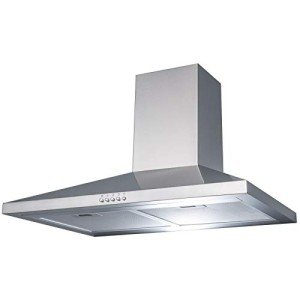What Are The Biggest “Myths” Concerning Hood Extractor May Actually Be Right
Understanding Hood Extractors: An In-Depth Exploration
Introduction
Hood extractors, often referred to simply as exhaust hoods, are vital components of residential and business kitchens. They serve the essential function of keeping a safe and comfortable environment by removing smoke, steam, heat, and airborne grease particles produced throughout cooking. This blog post intends to supply a helpful overview of hood extractors, consisting of types, benefits, components, setup considerations, and typical FAQs.
What are Hood Extractors?
A hood extractor is a ventilation gadget installed over cooking equipment to record and exhaust cooking by-products. It normally consists of a fan, a filtration system, and ductwork that reroutes air outside or back into the kitchen after purification. Their primary purpose is to improve air quality and lower the danger of fire threats in cooking locations.
Kinds Of Hood Extractors
Hood extractors been available in different designs and mechanisms fit to different kitchen layouts and cooking designs. Below is a table classifying the main types of hood extractors, in addition to their qualities:
| Type | Description | Best Suited For |
|---|---|---|
| Wall-Mounted | Connected to the wall above the cooking range and often found in home kitchens. | Residential kitchens |
| Island Hoods | Suspended from the ceiling above an island cooktop, providing ventilation from above. | Open-concept kitchens |
| Under-Cabinet Hoods | Set up below kitchen cabinets, suitable for smaller setups. | Compact kitchens |
| Downdraft Hoods | Retractable hoods that rise from behind the cooktop, capturing smoke and fumes. | Modern kitchens with minimal area |
| Business Hoods | Sturdy models designed to deal with high-volume cooking and large kitchen configurations. | Restaurants and business kitchens |
Advantages of Installing Hood Extractors
Incorporating a hood extractor in your kitchen exceeds aesthetic appeals. Here’s a list of the considerable advantages they offer:
- Improved Air Quality: By getting rid of cooking fumes, grease, and smoke, hood extractors help preserve a cleaner and much healthier kitchen environment.
- Fire Safety: They reduce the danger of fire risks by removing grease and heat from cooking surface areas.
- Enhanced Comfort: Proper ventilation prevents excessive heat buildup, making cooking a more comfortable experience.
- Smell Control: Hood extractors effectively lessen undesirable cooking odors, ensuring your home smells fresh.
- Reduced Cleaning: They help keep kitchen surfaces cleaner by recording grease and particles that would otherwise settle on walls and appliances.
Parts of a Hood Extractor
To comprehend how hood extractors operate, it is necessary to acquaint oneself with their primary components. Below is an in-depth description of these critical parts:
| Component | Description |
|---|---|
| Ventilation Fan | The motorized part accountable for drawing air through the purification system and tiring it outside or back into the kitchen. |
| Filters | Generally made of metal or charcoal, filters capture grease and food particles, making sure cleaner exhaust. |
| Ductwork | A network of tubes that carries air from the hood extractor to the exterior ovensandhobs of the building or recirculates it within the kitchen. |
| Controls | Features that permit users to adjust fan speeds, turn lights on and off, and handle filter cleaning cycles. |
| Lighting | Included lights that illuminate the cooking surface for improved exposure. |
Setup Considerations
When installing a hood extractor, it’s important to consider numerous aspects:
- Size and Capacity: The hood needs to match the size of the cooking range and have sufficient CFM (Cubic Feet per Minute) capability to successfully aerate the space.
- Height: The position needs to permit optimum suction without obstructing headroom. The basic recommendation is 24-30 inches above the cooking surface area.
- Ducting: The ductwork ought to be straight and as short as possible to help with maximum efficiency while lessening air resistance.
- Style and Aesthetics: Choose a style that complements the kitchen’s overall style. Alternatives range from modern stainless steel to more standard styles.
- Power Source: Ensure electrical and pipes requirements are fulfilled for powered hoods, and consider local building codes that may dictate specific installation methods.
Often Asked Questions (FAQs)
Q1: How often must I clean my hood extractor?A1: It is recommended to clean the filters and external surfaces each month, while the internal components need to be checked and cleaned up every 6 months or more often if you cook often. Q2: Do I need a professional for installation?A2: While DIY setup
is possible for some house owners, working with an expert makes sure compliance with regional structure codes and optimum efficiency. Q3: What type of maintenance do hood extractors require?A3: Regular filter cleaning or replacement and occasional evaluationof the fan and ductwork for clogs or wear are crucial maintenance tasks. Q4: Are hood extractors noisy?A4: Noise levels vary by model; premium hood extractors are created to operate quietly. Look for low Sones rankings for quieter models.Q5: Can hood extractors be set up in every kitchen?A5: Yes, but it is important to pick a model that fits the kitchen’s size, kind of cooking home appliances, and design to ensure optimal performance.
Hood extractors play an important function in maintaining a safe, tidy, and pleasant kitchen environment. By understanding the different types, benefits, parts, and installation considerations
, homeowners and kitchen designers can make educated choices that enhance both performance and style in their cooking spaces. As we continue to navigate how we cook and communicate with our kitchens, hood extractors will stay an important feature for all culinary lovers.

